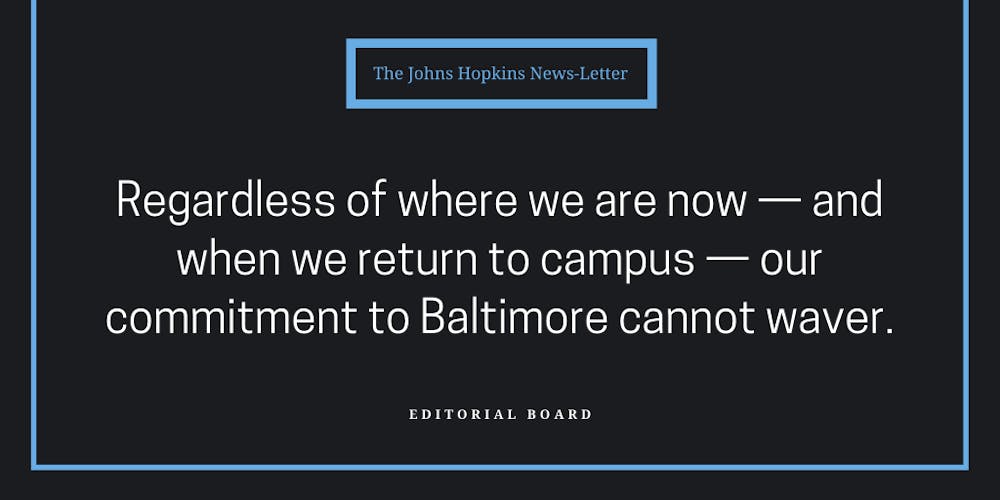Five years ago, Baltimore residents took to the streets to protest the death of Freddie Gray, a 25-year-old black man from Sandtown-Winchester. Gray died on April 19 from a severe spinal cord injury sustained while in police custody, yet no officer was convicted.
Some call the protests “riots.” We call them the Baltimore Uprising. Despite moments of violence that drew disproportionate amounts of national attention during those weeks, the protests were largely peaceful. Gray’s death was one of many instances of police brutality against black residents in Baltimore, catapulting thousands of people — including Hopkins students — into a fight against the systemic inequalities of our city.
The Uprising was a turning point for activism on campus. On April 29, 2015, the Black Student Union (BSU) joined demonstrators downtown to protest racial profiling and unjust treatment of black Baltimoreans. Under the leadership of groups like BSU, students pressured the University to become more inclusive and accountable to the city. Five years later, this tide of activism persists among students and the Baltimore community.
But so do the systemic inequalities that led directly to Gray’s death.
The ongoing coronavirus (COVID-19) pandemic has only further emphasized the preexisting racial inequalities in Baltimore. In Maryland, while African Americans make up 30.9 percent of the population, they make up 49.4 percent of COVID-19 cases.
This holds true nationwide. While we will not have an accurate racial breakdown of U.S. COVID-19 cases until the beginning of May, the pandemic is disproportionately affecting black Americans, who are less likely to have health insurance and more likely to have preexisting medical conditions than white Americans.
Despite being home to leaders in healthcare and medicine, Baltimore’s white L and black butterfly are as prominent as ever. Baltimore neighborhoods that were redlined in the 1930s still have higher rates of poverty and worse health outcomes. Just six miles apart, the average life expectancies of the neighborhoods of Roland Park and Hollins Market differ by 20 years.
Since the Uprising, Baltimore City government has faced significant turnover and multiple scandals. We need greater political stability in order to truly enact change in the city, and consistent leadership is the first step in this process.
This leadership is also necessary on a national scale, where the city has been the target of undeserved criticism. The late Rep. Elijah Cummings, however, received praise for his active role in the Uprising. On April 28, Kweisi Mfume was elected to reoccupy the seat he held before serving as president of the National Association for the Advancement of Colored People. We hope that Mfume will carry on Cummings’ legacy and fight for the city.
As residents of the city, we must urge our local government officials to combat racial injustice. Our hope for the city remains high, and we must recommit to addressing the issues that led to the Uprising.
Right now, we are unable to organize in person like BSU and thousands of Baltimoreans did in 2015. That doesn’t give us the right to be passive about necessary change. Though many of us are not physically in the community, students must not forget about Baltimore.
Hopkins students are adapting; members of community service-based organizations have continued their work in modified ways. Others have been coordinating remotely via social media to help their neighbors in the city. Students can also get involved online with organizations like Baltimore Ceasefire 365 and Black Votes Matter. Some of these efforts work to assist residents during the pandemic, while others aim to enact longer-term change.
Just like Gray’s death, the COVID-19 pandemic has highlighted inequalities in Baltimore. These problems become very clear during times of crisis, but we cannot forget about them once life “returns to normal.” Regardless of where we are now — and when we return to campus — our commitment to Baltimore cannot waver. We must continue to fight for the betterment of our city and our home.





